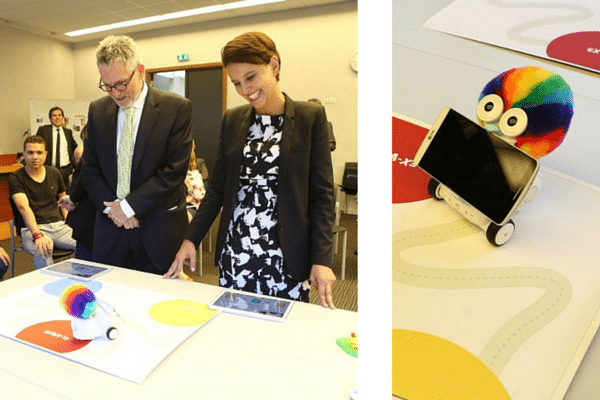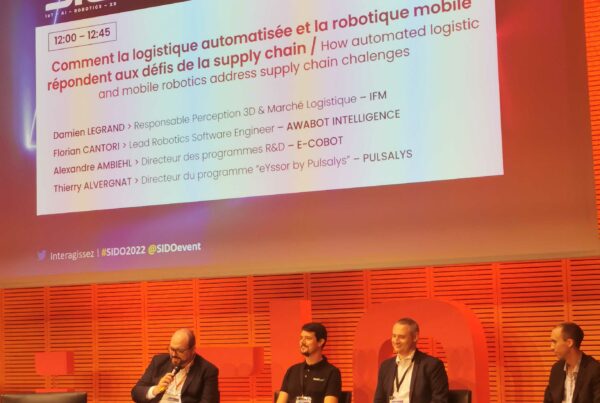Photos © Philippe Devernay / MENESR // Source : www.najat-vallaud-belkacem.com
But who is Najat Vallaud-Belkacem’s huge smile for? A small « mathematician » robot, supplied by Awabot Intelligence as part of the OCINAEE project, or “Connected objects and digital interfaces for primary school learning”. Awabot is making the introductions.
OCINAEE is a programme piloted by two researchers from Lyon and aims to develop and study mathematical learning situations at primary school level with special devices. Pupils from ten or so schools in the Académie de Lyon will be working with Albert, a small robot, together with a smartphone and two tablets, until the end of the school year. Four partners are sponsoring the programme: le centre Erasme (Living Lab of the Rhône department), l’Ecole Normale supérieure de Lyon via the IFE (French Institute for Education), DigiSchool, a startup specialised in designing and developing applications and editing content and Awabot Intelligence.

Interaction between humans and robots serving education
Specialists in telepresence, Awabot has put together Awabot Intelligence to create and develop projects with high added value to go with their BEAM robots and more generally speaking, interaction between humans and machines.
The OCINAEE project is a perfect illustration of this. Telepresence robots increase the possibility of distance learning in the same way that the « mathematician » robot interacts with and assists pupils, making learning more accessible and even fun.
In this context, Awabot’s objective is to provide the robot, prepare the kits each one including 3 robots, 3 smartphones and 6 tablets then spread them out in the schools. Over and above the logistics aspect of things, the R&D department is also taking part in weekly workshops with 30 teachers who have invested time in the project and who are in phase with the other partners. The aim of these workshops? To establish teaching scenarios that result in answers achieved in a fun yet educational manner.
For example, the “arithmetic race” whereby pupils have to have the correct answer to mental arithmetic sums to move the robot forward. Or the “number target”, where Albert gives a number and then the pupils have to choose 3 “number” cards adding up to the target number. Other learning scenarios are on the agenda for 2016.
To follow the OCINAEE project, go to the special blog: ocinaee.blogs.laclasse.com



